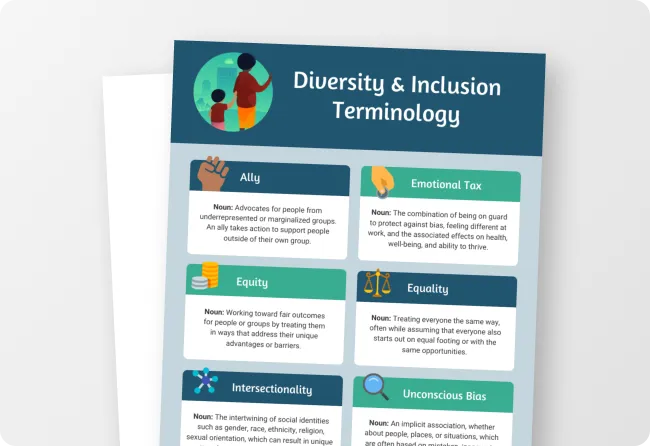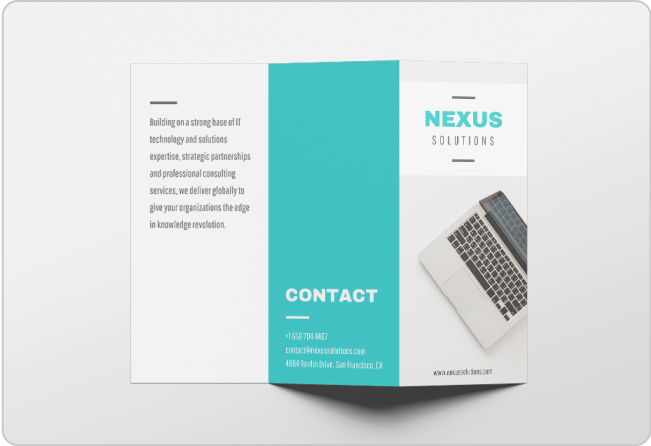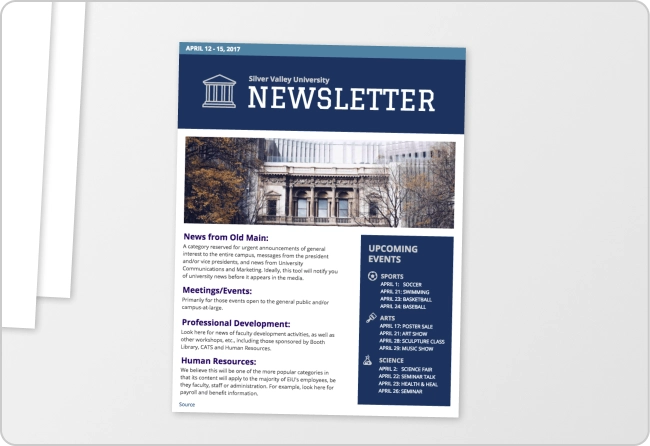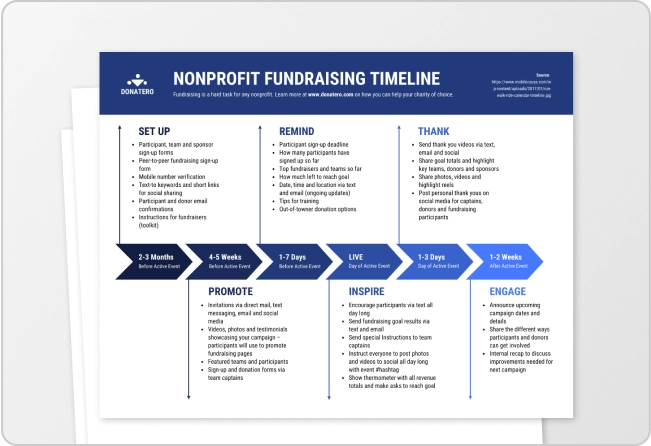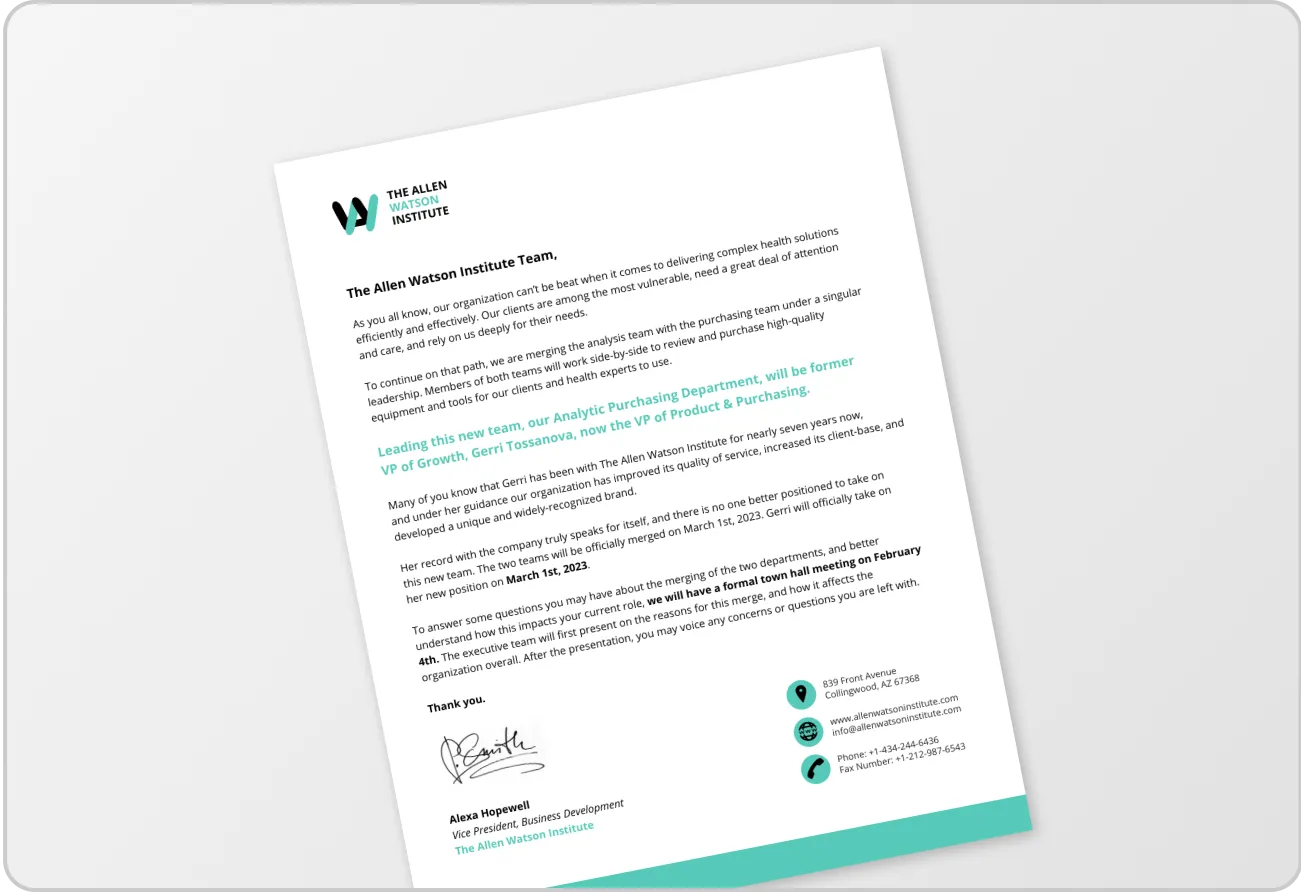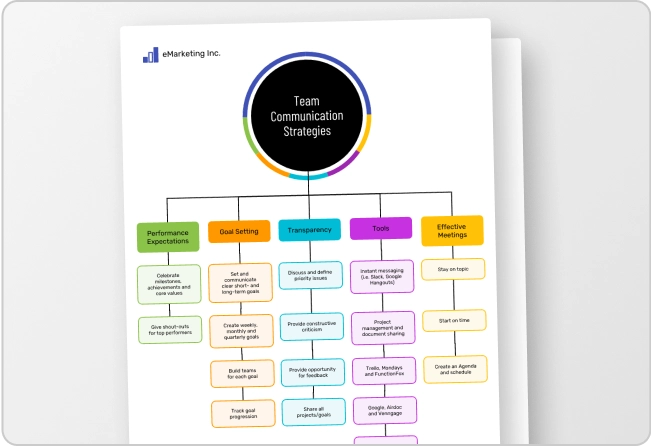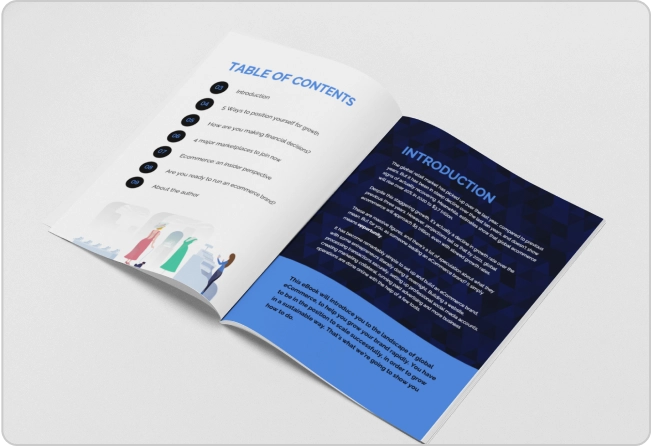
Writing an executive summary sounds easy until you sit down to actually do it. I know because I’ve been there.
Most people fall into the classic trap: they either say way too much or too little. And when it’s time for the investors or partners to review your business plan, they gloss over it because it doesn’t make an impression.
If you’ve tried writing one yourself, you know what I’m talking about.
But don’t worry, you won’t run into the same problem again. That’s because in this guide, I’ll show you how to write an executive summary that gets to the point, commands attention and makes people want to read through your entire business plan.
What is an executive summary?
An executive summary is a brief overview of your business plan that highlights the most important points, such as what your business does, how it’ll succeed or why it matters.
Think of it as a trailer for your full business plan instead of the whole movie. It gives just enough information to hook your audience, pique their interest and make them want to learn more.
It usually sits at the beginning of the business plan. And yet, it’s often the last part people write. Why? Because you can’t summarize a story until you know what it says.
It’s like writing a blog headline; it’s best to come back to it after you finalize the draft.
But let me be clear: An executive summary is not your full business plan in short form. It’s not just an intro either. And it definitely isn’t the place to list every goal, feature or marketing channel you’ve ever dreamed up.
Instead, it serves three very specific goals:
- It offers a sneak peek into your business: If someone only reads your summary, they should understand what your business does, who you sell to and how you plan to profit from it.
- It’s an elevator pitch for your business: Business plans don’t exist in vacuums. Their goal is to articulate your strategy, align your team or secure investment. The summary headlines all of that.
- It’s a north star for your team: An executive summary is a reminder for you and your team to stay focused on your long-term goals. If written well, it becomes the internal compass that guides you in your business journey.
If you’re writing a business plan just because your bank or investors asked for it, your executive summary is still the part they’ll judge first.
So treat it like you would a first meeting with someone important…with a firm handshake and a confident smile that makes you instantly likable.
Pro-tip: Want a smarter way to write your executive summary? Use Venngage’s AI Executive Summary Generator for free.
Key elements of an effective executive summary
A good executive summary doesn’t cram every detail into a single paragraph. Instead, it distills the creamiest information that matters most and presents it in a way that’s easy to grasp at a glance.
Don’t think of it like a boring summary of your business plan. Instead, use it like a highlight reel for your business plan.
That said, here’s what your executive summary needs to include and how to make each part worth reading.
1. Company description
When talking about your company, don’t just state what your business does. Instead, say why it exists.
Most entrepreneurs do the opposite. They directly start talking about their products or services, ignoring the origin story behind the business.
Open with a one-liner about your business. Then in two to three sentences, explain why it’s relevant to the world (or at least, your target audience).
Avoid vague phrases like “we’re a platform that connects people.” It’s generic and applies to everyone. Think Nokia from 1982, Facebook, Uber, Zoom or Tinder.
Here’s a better (although made-up) example:
SageFleet helps small logistics companies automate their fleet scheduling using predictive AI. It takes out guesswork or the need to manually enter and analyze from Excel. Since being established in 2021, we’ve helped over 200+ companies reduce scheduling errors by 43%.
This is a nicely done thesis statement that explains exactly what people need to know about your business.
Want more examples? Here’s an executive brief template in Venngage that breaks down the mission, vision and background in an easy-to-follow manner:

2. Problem and solution
This is where your story starts to shape, where you stab the problem that you solve. But most people rush through it like they are filling out a form.
Take the time to formulate the problem clearly. A good problem statement makes it personal and gets people excited about your business idea, even if they are investors.
A good way to do this is by contrasting your business to the ones that are solving the problem right now, but poorly.
But don’t stop at articulating the problem. Make it visual, quantify it and spell out the stakes.
For instance, don’t say “Business teams struggle with meetings.” Instead, say “Managers waste 6+ hours a week in meetings that waste their time. On average, this costs them over $100K annually in lost time.”
Then position your business plan as the logical next-step solution to this. Use this simple frame:
- What’s broken?
- How does it affect people?
- How are they dealing with it now?
- Why is your idea better?
Here’s a great executive summary template that exemplifies this:
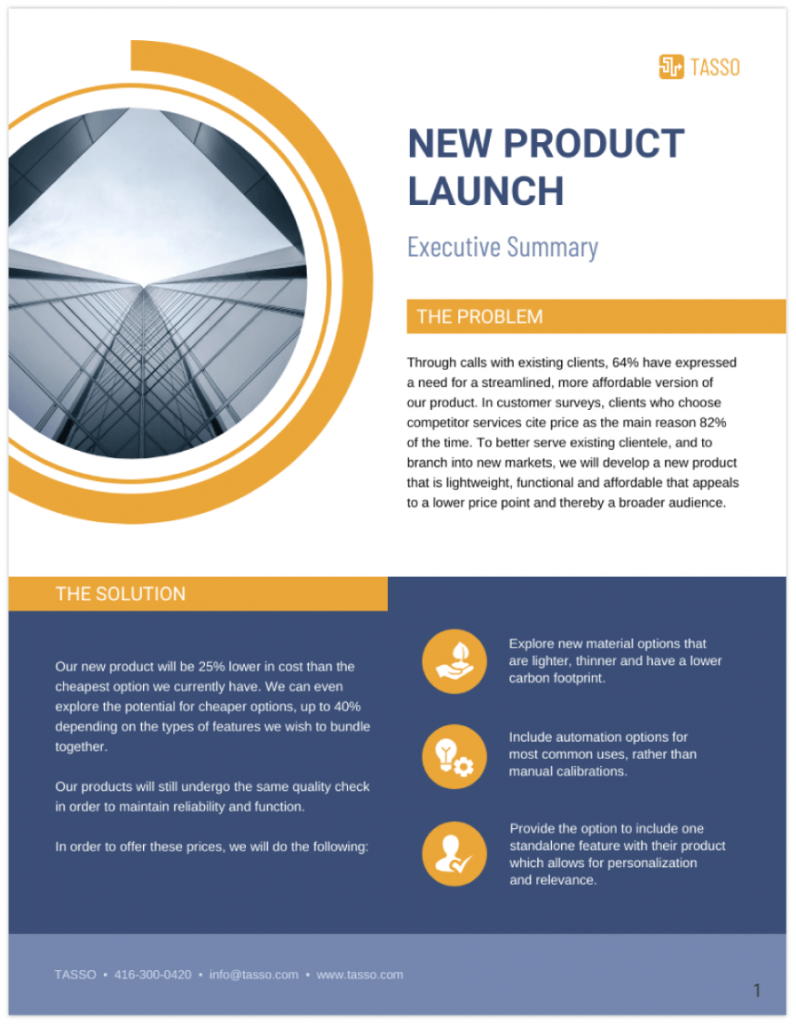
3. Target market
This is where a lot of executive summaries lose their ground.
People either go too broad (e.g., “our users are millennials with smartphones”) or too narrow (e.g., “left-handed Harry Potter fans in Burlington”).
Unfortunately, both are equally ineffective.
Your goal in this section is to show that you really know and understand your buyer persona. So you shouldn’t just spell out their demographics, but their behaviors, problems and what triggers them to look for a solution like yours.
Try to answer three things clearly:
- Who are you serving?
- How big is the market?
- Why now?
Avoid any kind of fluff related to the actual size of your market. If you say it’s a $5.5B market, break down the number. Show that you’ve done your homework rather than looking up the TAM in Google.
Here’s a related example from a Venngage template:

4. Competitive advantage
Don’t make the mistake of listing out every feature your product has. Instead, explain what you do differently that actually matters to your users.
Ask yourself: what’s your unique differentiation? Is it your team’s experience? Your proprietary data? Your distribution channel? Or something else?
Don’t be shy in naming your competitors. Investors love specificity. Acknowledging your competition shows that you’ve done your homework and you know what you are getting into.
However, be careful not to bash them. Position yourself against them strategically. Here’s an example:
Unlike traditional CRM tools that take weeks to implement, you can set up BlinkCRM in less than 10 minutes. It’s purpose-built for solopreneurs who don’t need all the bloat.
5. Marketing plan
Even the best products don’t sell themselves, at least not in the beginning.
The marketing plan section tells your reader how you’ll get in front of the right people and turn them into paying customers.
Avoid vague phrases like “we’ll use social media” or leverage “word of mouth” to grow. Those aren’t strategies, but channels that will help you distribute.
Instead, specify the tactics you will use, how you’ll iterate and what opportunities you see in them.
For example:
We will invest in SEO and partnerships with property managers to reach Airbnb hosts in urban areas. Our outreach has already earned us an 8% inquiry rate and 30% of demos convert into monthly cleaning and turnover service contracts.
6. Management team
The team behind a business idea matters more than people think. Investors bet on people more than products. And teams with credibility have a head start over the ones without it.
Showcase key members of your team and what gives them an edge. It could be their domain expertise, a track record of entrepreneurship or even lived experience with a problem.
You don’t necessarily have to be an Ivy School graduate to make an impression. Just show that your team knows how to execute.
Similarly, if it’s a solo venture, own it with confidence. It shows self-awareness and confidence that you have thought this through.
Here’s an example of a business plan template that proudly showcases the people behind the idea:

7. Risks and opportunities
Your executive summary should show that you’re not blindly hopeful about this new venture. Acknowledge the biggest risks and talk about how you will overcome them.
These might include challenges related to customer acquisition, regulatory hurdles or fierce competition.
Similarly, talk about the opportunities (e.g., timing, untapped market, product edge) that you can seize. This gives investors confidence in both your ambition and strategy.
To make your summary more compelling, include financial projections for the next 1–3 years. Address the expected revenue, operational expenses and key assumptions.
You don’t need exact numbers, just a roughly calculated plan to make sense of what to expect in the future. Here’s an example of a template that does this well:

Pro tip: You can use charts and graphs to visualize this section. Visuals are easier to digest than rows of numbers, especially when you are crunching numbers.
How to write an executive summary: A step-by-step guide
Writing an executive summary doesn’t have to feel like drafting a college thesis.
Here’s an actionable step-by-step breakdown of the entire process you can follow to build an effective summary that grabs attention:
Step 1: Start with the business plan
Before you start drafting the executive summary, read your full business plan thoroughly. Remember what we discussed earlier; it’s best to write the summary once you already have the business plan in place.
That’s because your executive summary should distill the core vision, strategy and goals that the plan mentions. If the plan doesn’t address them, fix that first. If you don’t already have one, you can easily create it with the AI Business Plan Generator.
Step 2: Identify key information
Next, focus on highlighting the most important information that your target audience cares about. For example, most investors and decision-makers want to know:
- What problem does your business solve
- How you solve it better than anyone else
- Who your customers are
- Why your team can deliver
- The financial upside and funding needs
Be ruthless about separating the wheat from the chaff. Every word in your executive should serve a purpose. If something doesn’t add more weight to your business case, drop it.
Step 3: Craft a compelling narrative
Facts and numbers are great for building credibility, but a well-articulated story is what wins hearts.
Start by outlining the problem in a way that feels personal or urgent. Then talk about how your business is uniquely positioned to solve it well.
Make sure you use simple language and avoid buzzwords. The goal of setting a narrative is to let people know about your industry and convince them why your plan deserves attention.
Keep the tone confident but honest. But don’t go overboard; overpromising can set you up for failure.
Step 4: Keep it concise
There’s a reason why it’s called an executive “summary.” Just because you want to build a narrative doesn’t mean you should beat around the bush.
Ideally, your executive summary should be one page, but rarely exceed two. Make sure each sentence pulls its weight. If you can’t explain a key point in two sentences, simplify it or leave it out.
You will have plenty of time to cover the details later, i.e. in the full-fledged business plan.
Step 5: Choose the right template
Once you’ve nailed the summary content, the next step is to package it well.
This is where a professionally designed executive summary template can save you time. It’s also a great way to polish your business plan without hiring a designer.
Start by choosing one of the executive summary templates in Venngage. It has thousands of templates to fit your narrative and brand style.
Take this template, for instance:

Next, populate the template with everything we have discussed in earlier steps. Your company overview, problem-solution framing, target market…the whole nine yards.
Remember, you’re not putting everything in design for aesthetics. Visuals are a tool for clarity. A visual executive summary makes it more compelling, comprehensive and credible.
Plus, Venngage’s templates are easy to use and highly customizable. You just have to plug your content in, tweak the colors and fonts to reflect your brand and you’re good to share or download your summary in minutes.
If you need a head start, here’s a quick walkthrough on how to create a visual on Venngage:
Step 6: Review and edit
Once you’re done drafting everything, the next logical step is to review it before sharing it with the right audience.
But if you have the luxury of time, put it away for a day or two. Why? Because when you give your creative work some space, you can come back with fresh eyes and spot things that you may not have noticed earlier.
Another trick: ask someone else (who you trust) to review it and share their feedback. Outside perspectives reveal blind spots you can’t see.
Finally, proofread your summary carefully before finalizing it. Typos or sloppy grammar kill credibility faster than anything else.
Common mistakes to avoid in your executive summary
Most business plans don’t fail because the ideas are weak. They fall flat because of how they’re written.
Here’s how to avoid the four most common traps that make even the best business plans sound dull:
1. Being too vague
It might be tempting to write an executive summary like you’re giving a TED Talk. But that approach often leads to generalities and buzzwords.
Vague summaries don’t inspire confidence. They leave your audience asking basic questions you should have already addressed in the summary.
For instance, saying you’re a “tech-enabled solution revolutionizing customer experiences” says a lot without saying anything at all.
Try spelling out the specifics. What do you actually do? For whom? What pain do you relieve that’s currently costing your customer time, money, sleep or relationships?
2. Lacking clarity
A lot of business plan summaries I have come across read like half-baked ideas jumbled together. But it’s not because the people who wrote it were lazy. More often than not, they assume how they are expressing themselves is exactly how the audience will perceive it.
Wrong. How can you be sure unless you test it?
Think of your reader like someone trying to board a train that’s about to leave. They don’t have time to interpret jargon, decode blocks of text or process acronyms. If you make them read a sentence twice, you’ve already lost them.
Clarity often means prioritizing structure. Put the most important information first. Stick to simple language. Use clear formatting to make the summary skimmable.
Most importantly, keep challenging your summary until you’re sure that a reader can grasp the key points within seconds.
3. Ignoring the audience
The executive summary is your moment in the sun, but not to the entire world. It’s a chance to signal to your audience that you have a real shot at solving a real-world problem.
Many founders often make the mistake of writing for themselves. They might talk about product features, the origin story or the tech stack.
But they might skip over things investors actually care about: the market size, who your customers are and your plan to profit from it.
Therefore, tailor the tone, content and even the summary information based on who’s the intended audience. Make sure to make it count for them.
4. Making unsubstantiated claims
This one is rabid…something you’ve probably noticed too. Too many businesses throw around claims of being #1 or category leaders without real proof.
More often than not, these bold statements originate from executive summaries.
“We’re the first…”
“No one else is doing this…”
“This is going to change the world…”
Sure, but only you can prove it with facts or numbers.
Big claims without evidence are lies. They make you sound more amateur instead of credible. It’s okay to be ambitious, but ground your confidence in real data.
If you say your churn rate is the lowest in your niche, show how it compares to the industry average. Or if you’ve landed key partnerships, drop names wherever appropriate. If the market is quadrupling, cite a credible source.
Don’t let wishful thinking or hyperbole creep into your executive summary. Stay grounded and factual to respect your audience’s intelligence and uphold professional integrity.
Great execution starts with a great executive summary
An executive summary is your first shot at pitching your business to people who count. Done right, it introduces your idea and sells it successfully to investors.
But what separates a forgettable summary from a powerful one? Clarity, simplicity and focus on the audience. And what fails it? The most common traps are vagueness, fluff or wishful thinking.
If you want your business plan to work for you, give your executive summary the energy and strategic thinking it deserves.
Better yet, start with a professionally designed template that can help you organize your thoughts and make them more persuasive.
Want to see how easy it is to create an executive summary with Venngage? Sign up today and take the first step to bring your business idea to fruition.
Frequently Asked Questions (FAQs)
Got questions about executive summaries? Here are some quick answers to common questions:
1. How long should an executive summary be?
An executive summary shouldn’t be longer than one page or two at max. It should make up about 5–10% of the entire business plan. It must be concise enough to quickly communicate key information and detailed enough to provide a clear picture that intrigues the readers further.
2. What is the difference between an executive summary and a business plan?
An executive summary or executive brief is a short overview of a larger, more detailed business plan. It highlights key elements such as the company description, target market, marketing strategy and challenges and opportunities.
On the other hand, a business plan is a detailed document that covers all aspects of a business idea. This often includes business strategy and market analysis. Read more about what a business plan is and how to write it.
3. What does a good summary look like?
In the context of a business plan, a good executive summary is clear, concise and convincing. It leads with key information, uses simple language and encourages the audience to read further.
It also grabs people’s attention from the get-go, outlines the problems and solutions, highlights the market size and gives an honest picture of the risks and opportunities involved.
4. Where can I find an executive summary template?
You can find free executive summary templates on DIY design platforms like Venngage. Venngage offers over 10,000 highly customizable, professional designs that help you create an executive summary in just a few minutes.




























